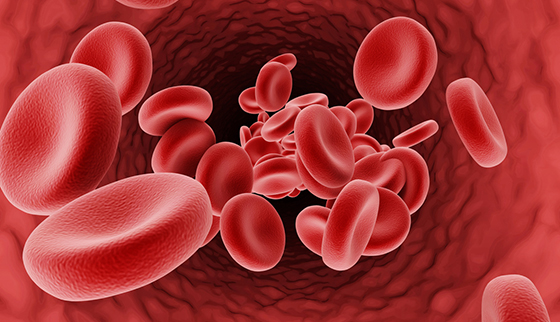Articles

Medical Nutrition Therapy for Thalassemia Patients
What is Thalassemia?
Thalassemia is a genetic blood disorder that affects the production of hemoglobin—the protein in red blood cells responsible for carrying oxygen throughout the body.
People with thalassemia produce fewer healthy red blood cells, resulting in lower-than-normal hemoglobin levels, which leads to anemia.
What Are the Types of Thalassemia?
Thalassemia is caused by mutations in the DNA of the cells responsible for hemoglobin production. Hemoglobin molecules are made up of alpha and beta chains, and mutations can affect the production of either type, resulting in alpha thalassemia or beta thalassemia.
Alpha Thalassemia
Mutations occur in the genes responsible for producing alpha chains in hemoglobin. Normally, four genes (two from each parent) are involved in alpha chain production. The severity of alpha thalassemia depends on how many mutated genes are inherited—the more mutated genes, the more severe the condition.
Beta Thalassemia
Mutations affect the genes responsible for producing beta chains in hemoglobin.
Each person inherits two beta genes (one from each parent). The severity of beta thalassemia depends on the specific location of the mutation on the hemoglobin molecule.
Severity:
- Inheriting one mutated gene leads to mild anemia with minimal symptoms—this is called beta thalassemia minor.
- Inheriting two mutated genes causes moderate to severe symptoms depending on the mutation:
Moderate type with less severe mutations is called beta thalassemia intermedia.
Severe type with two strongly mutated genes is known as beta thalassemia major, and patients often experience severe anemia requiring lifelong blood transfusions and management of complications such as iron overload.
What Diet Should Thalassemia Patients Follow?
Iron
Frequent blood transfusions can lead to iron overload. When the liver’s capacity to store iron is exceeded, the excess iron accumulates in other organs, such as the heart and pituitary gland, potentially causing damage.
➡️ Therefore, thalassemia patients should follow a low-iron diet to help prevent rapid iron accumulation.
Vitamin C
Vitamin C is a water-soluble antioxidant that also supports collagen formation, connective tissue, and bone repair. However, it increases iron absorption, so it's best to avoid consuming vitamin C-rich foods (like citrus fruits, tomatoes, and bell peppers) alongside iron-rich meals.
Calcium
Calcium is essential for bone health, especially since some thalassemia patients may suffer from osteoporosis.
It also reduces iron absorption when consumed with iron-rich meals, making it a beneficial addition to the diet.
Folic Acid
Folic acid (vitamin B9) is crucial for thalassemia patients. It supports red blood cell production, increases hemoglobin levels, and helps reduce anemia symptoms—especially in those with reduced hemoglobin synthesis.
Vitamin D
Vitamin D is important for improving bone health, which is often compromised in chronic anemia.
It works in synergy with calcium to ensure effective absorption and utilization of calcium in the body.
Magnesium
Magnesium plays a vital role in maintaining strong bones, enhancing calcium metabolism, supporting muscle function, reducing cramps, and promoting cardiovascular health by regulating heart rate and blood pressure—both of which may be affected by anemia and iron overload.
It also has anti-inflammatory properties, which may help reduce chronic inflammation associated with thalassemia.
Zinc
Zinc is an essential mineral with numerous benefits for thalassemia patients. It boosts immunity, enhances wound healing, and supports normal growth and development—functions often impaired by chronic anemia and nutritional deficiencies.
Zinc also improves skin health and reduces oxidative stress, which is especially helpful for patients who undergo frequent transfusions and have iron overload.
- Limit iron-rich foods like red meat; consume moderate amounts of poultry and seafood.
- Avoid vitamin C-rich foods (e.g., citrus, tomatoes, bell peppers) during iron-rich meals.
- Consume calcium-rich foods (milk, cheese, yogurt) with iron-rich meals to reduce iron absorption.
- Include magnesium-rich foods like avocado, nuts, and dark chocolate.
- Engage in light physical activities like walking, swimming, or yoga to promote bone and muscle health.
- https://ukts.org/nutrition/
- https://www.webmd.com/a-to-z-guides/what-is-thalassemia
- https://www.betterhealth.vic.gov.au/health/conditionsandtreatments/thalassaemi a
- https://my.clevelandclinic.org/health/diseases/14508-thalassemias
- https://thalassemia.ucsf.edu/information-about-thalassemia/nutrition/diet-non- transfused-patient
- https://pmc.ncbi.nlm.nih.gov/articles/PMC8732300/
- https://www.childrensmn.org/educationmaterials/childrensmn/article/16680/thal assemia-and-nutrition/
General Dietary Recommendations for Thalassemia Patients:
References:









